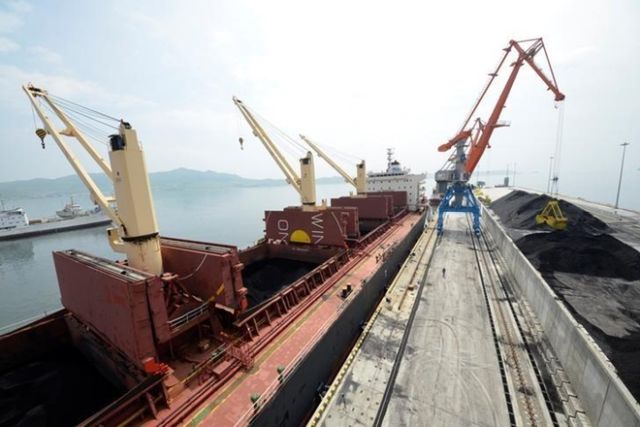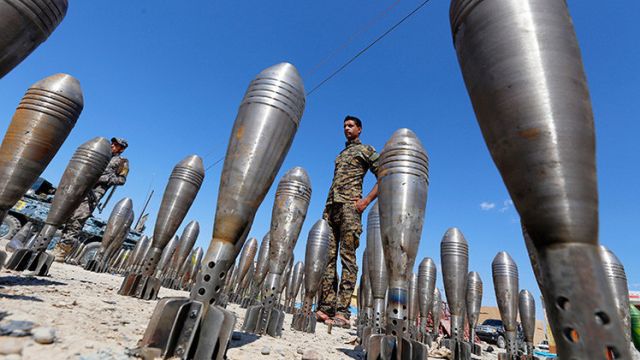
by admin | May 25, 2021 | World
 Nairobi : The number of people facing crisis-level food insecurity in the Eastern Africa region has increased by 18 per cent to 36.5 million in October from 30.9 million a year ago, UN humanitarian agency said on Tuesday.
Nairobi : The number of people facing crisis-level food insecurity in the Eastern Africa region has increased by 18 per cent to 36.5 million in October from 30.9 million a year ago, UN humanitarian agency said on Tuesday.
The UN Office for Coordination of Humanitarian Affairs (OCHA) Eastern Africa said in its latest report released in Nairobi that repeated episodes of drought across the region, conflicts and insecurity, high stable food prices and high refugee/displacements across the region are the main drivers of food insecurity, Xinhua reported.
“An estimated 36.5 million people are facing crisis-level food insecurity and above Integrated Phase Classification (IPC Phase 3+) and need humanitarian assistance. This is a 18 per cent increase compared to 30.9 million people one year ago,” OCHA said in its Food Security and Nutrition Situation report.
The UN report warns that food security conditions are expected to deteriorate in Burundi and Rwanda until the end of the year due to the lean season.
The report says food security is expected to improve in Sudan, Ethiopia and Uganda in coming months as households harvest seasonal crops.
The main areas of concern are South Sudan, Burundi, southeastern Ethiopia, pastoral areas of Kenya, and parts of Somalia and DRC.
The report says nutrition situation continues to be of concern in the region based on admission trends in several countries, despite ongoing response efforts.
“Urgent multi-sectoral humanitarian action is needed to respond to alarming levels of malnutrition in Somalia and Kenya to prevent further deterioration,” the UN said.
In Kenya, says the report, some 420,674 children require treatment of acute malnutrition while in Ethiopia, 376,000 children with severe acute malnutrition are expected in 2017.
The UN report says some 1.2 million children in Somalia are projected to be malnourished over the next one year period, including 231,829 being severely malnourished.
“In Sudan, 2 million people are acutely malnourished including 550,000 who are severely malnourished. In South Sudan more than 1 million children under age 5 are estimated to be acutely malnourished,” OCHA said.
—IANS

by admin | May 25, 2021 | World
 Bogota : Colombia has signed a $300 million agreement with the UN aimed at reducing the production of cocaine, the media reported.
Bogota : Colombia has signed a $300 million agreement with the UN aimed at reducing the production of cocaine, the media reported.
According to the UN Office on Drugs and Crime (UNODC), farmers who switch from growing coca, the raw material used to make cocaine, to safer crops will be compensated, reports the BBC.
Speaking in Vienna, the head of the UNODC, Yury Fedotov, said on Friday: “This historic agreement is a unique opportunity to turn the tide against Colombia’s coca cultivation and help farmers embrace alternative development.
“The pursuit of peace requires tangible solutions to the crimes that fuel and feed conflict.”
Currently, farmers earn $300 a month for every hectare of coca they grow.
This initiative will provide compensation to farmers if they revert to producing safer crops, such as coffee and cacao, the UNODC announced.
Colombia is ranked as one of the main drug-growing nations in the world by the UNODC.
—IANS

by admin | May 25, 2021 | Media, World
 Geneva : More than 30 journalists have been killed in targeted attacks this year, two UN Special Rapporteurs announced.
Geneva : More than 30 journalists have been killed in targeted attacks this year, two UN Special Rapporteurs announced.
Speaking ahead of the International Day to End Impunity for Crimes Against Journalists, the Special Rapporteurs on arbitrary, summary and extrajudicial executions, Agnes Callamard, and on freedom of expression, David Kaye, called on states to take actions in this regard, reports Xinhua news agency.
“In addition to taking individual lives and depriving family members of their loved ones, these attacks aim to destroy the public watchdog role of journalism that is essential to democratic society,” they said in a joint statement issued on Wednesday.
According to them, the attacks on journalism were widespread and deplorable.
“When authorities fail to follow up such attacks with independent and impartial investigations that can bring perpetrators to justice, the killers and their allies achieve their objectives,” the statement said.
The attacks need to stop, they said, adding that so too does the public demonisation of reporting and specific media outlets and reporters by political leaders at the highest levels.
“Our societies cannot afford to continue this downward spiral of attacks against journalists. We urge all States – in word and action – to devote resources to reverse this trend,” it added.
A UN General Assembly resolution in 2013 designated November 2 the International Day to End Impunity for Crimes Against Journalists.
—IANS

by admin | May 25, 2021 | World
 United Nations : The UN has banned four ships from visiting any global port, after they were found violating sanctions imposed on North Korea, the media reported.
United Nations : The UN has banned four ships from visiting any global port, after they were found violating sanctions imposed on North Korea, the media reported.
Hugh Griffiths, co-ordinator of a UN panel on North Korean sanctions, on Monday night described the move as unprecedented, reports the BBC.
The ships were reportedly the Petrel 8, Hao Fan 6, Tong San 2 and Jie Shun.
According to the MarineTraffic website, a maritime database that monitors the movement of vessels, Petrel 8 is registered in Comoros, Hao Fan 6 in Saint Kitts and Nevis, and Tong San 2 in North Korea. The registered country of Jie Shun was not listed.
Griffiths said the ships were found “transporting prohibited goods”.
The ban was announced following a UN meeting earlier on Monday.
In August, a UN resolution banned exports of coal, seafood and iron ore from North Korea, reports the BBC.
Sanctions were expanded last month in response to Pyongyang’s sixth and largest nuclear test yet, to include the export of textiles and North Korean guest workers, as well as a cap on oil imports.
—IANS

by admin | May 25, 2021 | Opinions
 By Rajendra Shende,
By Rajendra Shende,
Mandated by the UN, the coalition forces invaded Iraq in 2003 to destroy its “chemicial weapons of mass destruction” without finding a smoking gun. That’s the negative. There’s also been a positive.
Thirty years ago, member-states of the UN reached amazing consensus, without any sign of a smoking gun, and sealed a deal to take daring action. To dramatise the story, 24 countries on that day decided to start destroying what could be called “chemical weapons of mass destruction” that were being emitted, albeit unintentionally, in millions of tonnes annually and getting “stocked” in the sky. Those groups of chemicals were called ozone-depleting substances, mainly chlorofluorocarbons (CFCs), which were predicted to be the cause of the destruction of the Earth’s defence system — the stratospheric ozone layer.
When the final negotiations under the umbrella of the UN Environment Programme ended on September 16, 1987, with a historic agreement called “The Montreal Protocol on Substances that Deplete the Ozone Layer”, there was no smoking gun evidence that CFCs were the cause of the global depletion of the ozone layer. The ozone hole — loss of more than 50 per cent (and even 95 per cent in places) of the ozone — was observed over Antarctica’s stratosphere when the negotiations were taking place, but scientists could not firmly implicate CFCs for it in a conclusive manner. The evidence of the predicted impact on life on Earth was even farther and nowhere visible. The only push came from scientists who theorised the destruction of the ozone layer and the study reports from more than a decade of research after the proposed hypothesis was first made.
Delegates, however, agreed not to give a cynical shrug to the lack of specific attribution and causation. They no longer demanded a smoking gun. They decided to begin action to eliminate production and consumption of CFCs.
The Montreal Protocol proved to be a historic first step. Sealing that one deal began the journey of the most successful multilateral agreement in the annals of not only global environmental accords but for any UN global accord. It gave birth to the concept of the “precautionary principle” which was the seminal theme of the Agenda 21 that the world leaders agreed on five years later, in June 1992, in Rio de Janeiro.
It signalled an approach that necessarily requires action to control inputs of such substances and happenings even before a causal link has been established by absolutely clear scientific evidence.
The story is nothing short of extraordinary. It started with the concurrent publication of two scientific papers in two American universities — one by Richard Stolarsky and Ralph Cicerone of the University of Michigan, and other by Mario Molina and Sherwood Rowland of the University of California-Berkeley. Extraordinary, because a scientific paper is rarely the subject of discussion in the buzzing corridors and glittering halls of the UN.
Second, the papers theorised a postulation, based on the not-so-simple chemistry taking place high up in the sky. Specifically, the papers stated that CFCs being exceptionally stable, once released into the atmosphere, can transgress to the stratosphere 15 km above the Earth. They would then have been decomposed by high-energy solar UV rays and would release chlorine atoms that could eliminate ozone molecules existing in the rarefied concentration of one in a million other molecules.
That would trigger the dangerous loss of ozone in the stratosphere, because each chlorine atom could destroy hundreds and thousands of ozone molecules which form the ozone shield that protects life on the earth. That was a shocking hypothesis, almost like a gunshot fired at close range. UN delegates, used to dealing with conflicts on the ground, could hardly be expected to take note of such a postulation, leave alone take action to eliminate causative reasons.
Subsequent worldwide collaborative scientific study did find the smoking gun within months of the Montreal Protocol’s signing.
Scientists like Susan Solomon of NOAA (now MIT) were able to solve the jigsaw puzzle of chlorine and other species observed over Antarctica by linking them to very low temperature catalytic reactions accelerated by the ice crystals of the polar stratospheric cloud.
The Montreal Protocol has since succeeded in phasing out 98 per cent of the ozone-depleting chemicals, including nearly 100 per cent of CFCs. But more importantly, it phased-in the important precautionary principal lesson in the history books of the UN’s multilateral environmental agreements. Last month’s observations of the ozone layer over Antarctica by NASA records definite slowing of its depletion and better recovery than last year — rare success that exemplifies the positive results of UN efforts and collective global action.
Two years ago, world leaders adopted the Sustainable Development Goals — SDGs — a collective action for a better world by 2030. This agenda carries forward the seminal principle of the precautionary approach.
(Rajendra Shende, an IIT alumnus, is Chairman TERRE Policy Centre and a former UNEP Director. The views expressed are personal. He can be contacted at shende.rajendra@gmail.com)
—IANS

 Nairobi : The number of people facing crisis-level food insecurity in the Eastern Africa region has increased by 18 per cent to 36.5 million in October from 30.9 million a year ago, UN humanitarian agency said on Tuesday.
Nairobi : The number of people facing crisis-level food insecurity in the Eastern Africa region has increased by 18 per cent to 36.5 million in October from 30.9 million a year ago, UN humanitarian agency said on Tuesday.



